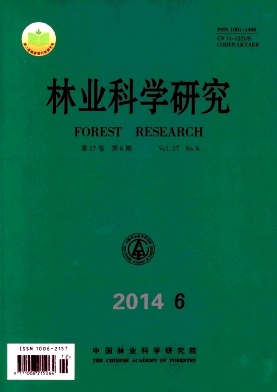|
[1]
|
方嘉兴,何 方. 中国油桐[M]. 北京: 中国林业出版社, 1998: 285-331.
|
|
[2]
|
Park J Y, Kim D K, Wang Z M, et al. Production and characterization of biodiesel from tung oil [J]. Appl Biochem Biotechnol,2008,148(1-3):109-117. |
|
[3]
|
Chen Y H, Chen J H, Chang CY, et al. Biodiesel production from tung (Vernicia montana) oil and its blending properties in different fatty acid compositions[J]. Bioresource Technology, 2010, 101(24): 9521-9526. |
|
[4]
|
李永梅, 魏远新, 周大林, 等. 油桐的价值及其发展途径[J]. 现代农业科技, 2008, 16(8): 113-113.
|
|
[5]
|
陈温舒, 蒙美琼. 油桐枯萎病的初步研究[J]. 林业科学,1965,10(4):362-363.
|
|
[6]
|
袁志林, 陈益存, 汪阳东. 一种新发生的油桐叶枯病病原真菌[J]. 菌物学报, 2011, 30(4): 658-662.
|
|
[7]
|
秦正学. 油桐枯萎病的发病原因及防治措施[J]. 现代园艺, 2012,(12):159-163.
|
|
[8]
|
White T J, Bruns T, Lee S, et al. Amplification and direct sequ-encing of fungal genes for phylogenetics[M] // Innis M A,Gelfand D H, Sninsky J J, et al. PCR protocols: a guide to methods and applications. San Diego, USA: Academic Press, 1990:315-322. |
|
[9]
|
花锁龙. 油桐主要品种(类型)对枯萎病的抗性及其测定方法[J]. 林业科技通讯, 1983, (8): 13-15.
|
|
[10]
|
蒋德安, 朱 诚. 植物生理学实验指导[M]. 成都: 成都科技大学出版社, 1999: 83-87.
|
|
[11]
|
郝建军, 刘延吉. 植物生理学实验技术[M]. 沈阳: 辽宁科学技术出版社, 2001: 162-168.
|
|
[12]
|
孙青缙. 油桐的嫁接[J]. 林业科技通讯, 1965, (12): 4-5.
|
|
[13]
|
吴光金, 林雪坚, 张宏业, 等. 千年桐抗枯萎病的研究[J]. 中南林学院学报, 1988, 8(1): 28-34.
|
|
[14]
|
Suzuki N, Mittler R. Reactive oxygen species and temperature stresses: a delicate balance between signaling and destruction [J]. Physiologia Plantarum, 2006, 126(1): 45-51. |
|
[15]
|
Glazebrook J. Genes controlling expression of defense responses in Arabidopsis-2001 status [J]. Current Opinion in Plant Biology, 2001, 4(4): 301-308. |
|
[16]
|
Holt III B F, Hubert D A, Dangl J L. Resistance gene signaling in plants-complex similarities to animal innate immunity[J]. Current Opinion in Immunology, 2003, 15(1): 20-25. |
|
[17]
|
Dangl J L, Jones J D G. Plant pathogens and integrated defence responses to infection [J]. Nature, 2001, 411(6839): 826-833. |
|
[18]
|
Nürnberger T, Scheel D. Signal transmission in the plant immune response [J]. Trends in Plant Science, 2001, 6(8): 372-379. |
|
[19]
|
Andreasson E, Ellis B. Convergence and specificity in the Arabidopsis MAPK nexus [J]. Trends in Plant Science, 2010, 15(2): 106-113. |
|
[20]
|
Dong X. SA, JA, ethylene, and disease resistance in plants [J]. Current Opinion in Plant Biology, 1998, 1(4): 316-323. |
|
[21]
|
Thomma B P, Penninckx I A, Cammue B P, et al. The complexity of disease signaling in Arabidopsis[J]. Current Opinion in Immunology, 2001, 13(1): 63-68. |
|
[22]
|
Durner J, Shah J, Klessig D F. Salicylic acid and disease resistance in plants [J]. Trends in Plant Science, 1997, 2(7): 266-274. |





 DownLoad:
DownLoad: